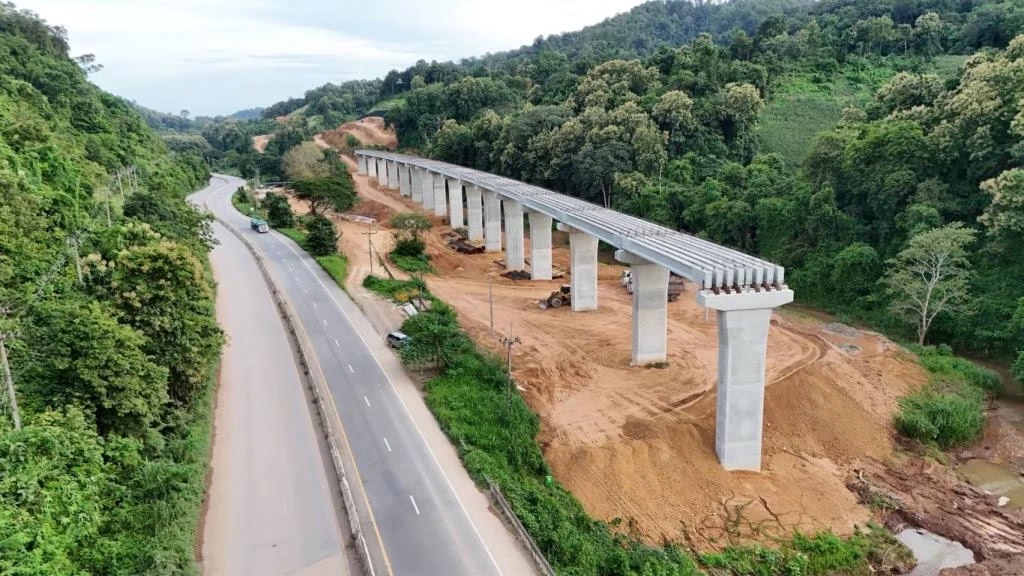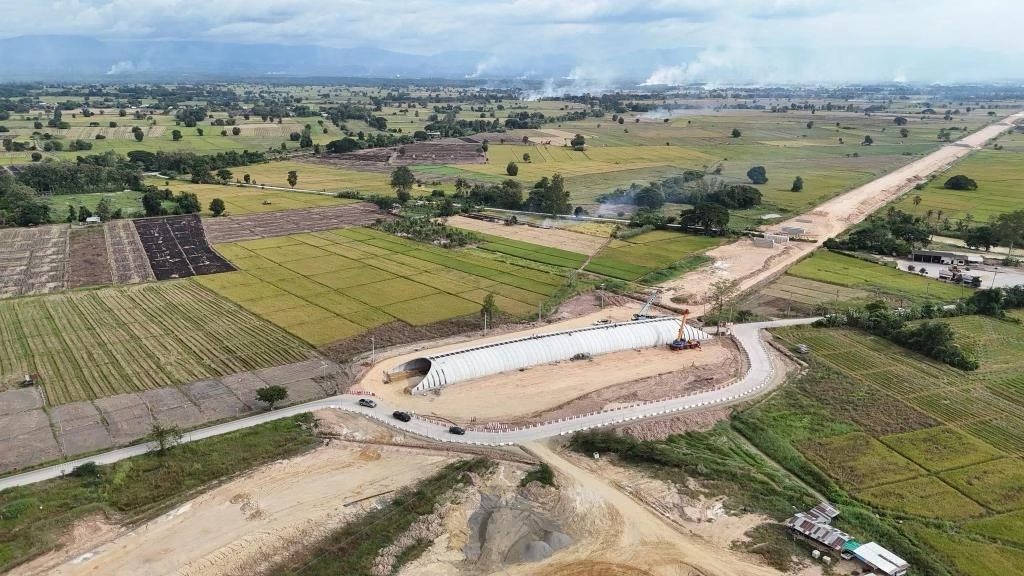CHIANG RAI – The State Railway of Thailand reports that the Chi, with a budget of more than 85 billion baht, is finally moving ahead at a record pace. The latest progress report shows that construction of underpasses, elevated tracks, tunnels, and other structures is moving faster than planned. The line is expected to open in 2028 and will boost tourism and border trade in the North.
The new railway stretches 323.1 kilometres from Den Chai in Phrae through Lampang and Phayao, then into Chiang Rai, passing areas such as Pa Daet, Wiang Chai, and Wiang Chiang Rung. Work along the whole route is progressing step by step.
By the end of October 2025, the project office reported overall construction progress at 46.112 percent. The planned progress at that point was 45.211 percent, which means the work is ahead of schedule by 0.901 percent.
The government and the State Railway of Thailand (SRT) signed contracts with private contractors on 15 February 2022. The project is scheduled to be completed and open for service on 14 January 2028. The total construction period is around seven years, with a total budget of 85.345 billion baht.
The Den Chai–Chiang Rai route has been on the drawing board since 1960, over 65 years ago. Many governments ordered fresh studies, each time spending tens or even hundreds of millions of baht, but no construction ever started. The project became known as a dream that never came true.
This changed under the government of Prime Minister Gen Prayut Chan-o-cha, which approved construction of the Den Chai–Chiang Rai–Chiang Khong line. The route starts at Den Chai district in Phrae and ends at the Thai–Lao PDR border in Chiang Khong district, Chiang Rai.
The line covers 323.1 kilometres, runs through 59 subdistricts, 17 districts, and 4 northern provinces: Phrae, Lampang, Phayao, and Chiang Rai.
Along the route, there will be 26 stations in total: 4 major stations, 9 minor stations, and 13 halts. All facilities are designed based on Universal Design principles so that people of all ages and abilities can use them safely. The project also includes boundary fencing along the track, railway bridges, and 40 road bridges that cross the railway.
There will be 102 road underpasses beneath the tracks, as well as connecting roads, traffic distribution routes, pedestrian bridges, footpaths, and motorcycle crossings and underpasses. These works will remove 254 level crossings on the route, which will help raise travel speeds and improve safety.
The project also includes 4 freight yards and 1 container yard at Chiang Khong station. The yard, on a 150-rai site, will link directly with the border checkpoint and support international freight traffic.
By section, the route in Phrae province is 77.20 kilometres long and has 6 stations: Den Chai, Sung Men, Phrae, Mae Kham Mi, Nong Siao, and Song. In Lampang province, the line extends 52.40 kilometres with 3 stations: Mae Tiep, Ngao, and Pong Tao. In Phayao province, the track runs for 54.10 kilometres with 6 stations: University of Phayao, Ban Thok, Waag, Phayao, Dong Chen, Ban Rong, and Ban Mai.
In Chiang Rai province, the route covers 139.40 kilometres and has 11 stations: Pa Daet, Pa Ngae, Ban Pong Kluea, San Pa Hiang, Chiang Rai, Thung Kor, Wiang Chiang Rung, Ban Pa Sang Junction, Ban Kiang, Si Don Chai, and Chiang Khong.
According to the project team, travel time on this railway will be around 1 to 1.5 hours faster than by car on the same route.
The line will add value to the northern region in terms of tourism and trade, create new income for people along the route, and cut long-term transport costs. It will also act as a gateway for northern border trade and open more channels to export Thai products.
The northern region offers beautiful scenery all along the line. Trains will pass mountain ranges, bridges, and tunnels in turn. This attractive route is expected to impress both Thai and foreign travellers, support existing tourist attractions, and encourage the development of new destinations.














